This article is more than 5 years old.
When I first heard ALA Annual 2015 was going to be held in San Francisco, I knew this was one ALA I did not want to skip. Having been once before with my husband at one of his conferences, I was excited to return to this beautiful, historic, and exciting city. Those three adjectives could not have rung truer than on June 26, 2015, the day the SCOTUS declared marriage equality for all to be the law of the land! Such a beautiful day!
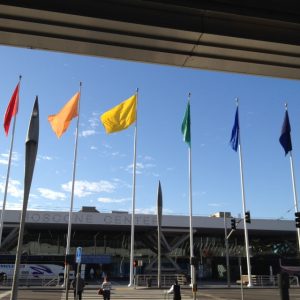
Annual 2015 began with me attending my first ever all-day preconference, which was sponsored by ALCTS (Association for Library Collections & Technical Services), OLAC (Online Audiovisual Catalogers), and the Video Round Table. Video Demystified: Cataloging with Best Practices Guides presented attendees with an overview on cataloging video recordings using RDA (Resource Description and Access), MARC21, and the recently published (January 2015) best practices cataloging guides for DVD/Blu-ray discs and streaming media. Because most of my work is DVD cataloging, I found the preconference especially worthwhile and informative as this was the first officially (i.e. ALA, OCLC, Library of Congress) sponsored face-to-face training I’ve received on RDA cataloging. Most of my DVD cataloging with RDA education has been through watching webinars (not the most useful), utilizing an online guide developed by Stanford University’s metadata department (very helpful) and the RDA Toolkit, and review of the ZSR RDA Workshop LibGuide created by Leslie McCall as well as consultation with her and Steve Kelley to clarify issues with RDA. Attendees participated in guided exercises and took home a workbook that contained all of the day’s presented PowerPoint slides.
While at ALA, I attended 4 ACRL Anthropology and Sociology Section (ANSS) sponsored meetings/sessions: the Subject and Bibliographic Access Committee (SBAC) of which I chair; the Executive Committee meeting; the Libraries behind Bars: Education and Outreach to Prisoners program that was co-sponsored with ACRL’s Law and Political Science Section (LPSS) and Literatures in English Section (LES); and the Anthropology Librarians Discussion Group. I was unable to attend the ANSS Social due to having to attend the editorial board dinner for Technical Services Quarterly (TSQ); Steve Kelley and I are the new co-editors of the journal’s book reviews column. We dined at the Stinking Rose: a Garlic Restaurant, where I got to try delicious garlic ice-cream (another first).
Social Justice Librarianship: Focus on Ferguson & Black Lives Matter was the topic discussed at the Anthropology Librarians Discussion Group. Librarians Makiba Foster (Washington University in St. Louis) and Niamh Wallace (University of Arizona) spoke about their roles as academic librarians in helping the Black Lives Matter movement.
Observing a lack of quality information and misinformation pertaining to the police shooting of Michael Brown and the events taking place in Ferguson, Missouri, Ms. Foster created the FaceBook page Resource List on Policing and Community Protest which contains specific categorized lists for a variety of topics (e.g. policing, grief & trauma, community protest & unrest, personal rights, and local community organizations). Two weeks after its posting, the university gave the green light to post it as a LibGuide. The digital repository Documenting Ferguson (DF) followed. The DF project team was comprised of members from several library units (e.g. special collections, copyright, reference, etc.) who wanted to assist in the preservation of their regional and national history. Ms. Foster’s role was to seek out community engagement for content. She partnered with an African American Women’s History professor whose sophomore seminar students (1/2 her class) developed interview questions and conducted oral histories of individuals living in Ferguson or the areas particularly affected by the protests and unrest, many of whom worked at the university. Specific community activists were interviewed also. Interviewees were selected based on their response to a faculty call out by the library, each signed a participant consent form. The oral histories captured in the digital repository include the interviewees’ names so that researchers would know that all persons interviewed actually lived in Ferguson. Ms. Foster admitted that content from the oral histories was one-sided as individuals with opposing views (i.e. supporters of Darren Wilson) were not interviewed for the project. She also stated that some people wanted no association with the DF project due to potential backlash, although they were proud to be working on the project. The digital repository for this particular project is semi-anonymous as some participant uploaded content is traceable only by an email address. Digital stations are being set up to capture images. There is a need to employ one person working solely on this large project, and grant funding is being investigated She closed by saying that the library will soon be preparing for 1 year memorials and commemorative events; a regional meeting is in the works to discuss collecting efforts; and marketing strategies to increase participation will be reassessed.
At Ms. Wallace’s institution, she also created a LibGuide to Ferguson resources for instructional purposes. Consent from the university’s IRB was unnecessary. Liaisons whose subject areas were relevant to the creation of this resource were asked to solicit feedback from their faculty. The LibGuide was used as a resource listing for a Black Life Matters Conference held on campus this past January. No negative feedback was received, and Ms. Wallace stated that she is not trying to capture opposing viewpoints in this research guide. More work is being done to update the guide with information about the recent June 17th church shooting in Charleston, South Carolina.
Other sessions I attended included
- Maryanne Wolf’s Lessons from the Reading Brain: 3 Short Stories about Deep Reading in the Digital Age, which Lauren so aptly covered in her blog post
- 2 sessions on linked data: Getting Started with Library Linked Open Data: Lessons from UNLV and NCSU, on which Lauren again reported, and the Linked Library Data Interest Group. The interest group session was comprised of a panel of 2 speakers. Kristi Holmes (Northwestern Medicine) provided an overview on the Cornell-developed open source semantic web application, VIVO, was presented. VIVO harvests data from verified institution data sources, and allows institutions to showcase their researchers’ credentials, expertise, and skills. A VIVO institution’s library can provide its faculty product education, training, and adoption utilizing liaison outreach, ontology and controlled vocabulary expertise, negotiating with data providers, programming and technical expertise. Cornell’s Steven Folsom reported on the Linked Data 4 Libraries Mellon funded grant between Cornell, Stanford and Harvard. One can search for works by individuals and discover additional works of interest based on connections to other people. Utilization of URIs in MARC records that align with VIVO can enhance an academic library’s catalog. Cornell has rolled out an authority browse in their Blacklight catalog. Using 3xx field data in his authority file generates data and provides context about him and what what he does professionally. Theses advisors’ names appearing in a MARC 700 Personal Name field can now be enhanced with VIVO URIs. A post-processor to provide entity resolution of URIs is required for the evolving BIBFRAME. A limit of its ontology, this means that linked data within the BIBFRAME platform cannot have multiple URIs for an individual. BIBFRAME RDF still makes heavy use of strings which are a dead end for linked data.
- Resource Discovery in the Age of Wikipedia: Jake Orbwitz and Alex Stinson, both of The Wikipedia Library, shared reasons why Wikipedia matters for librarians and various ways in which librarians can become involved in Wikipedia. In addition to adding information and citations from a library’s collections, librarians can teach “Wikipedia as a Starting Point” workshops, run an editathon, and donate images. Libraries can also sponsor a Wikipedia Visiting Scholar to create quality content for Wikipedia using their individual institution’s resources.
After my last Monday session at ALA, Lauren, Derrik and I took a bus to tour the Internet Archive (IA) founded by Brewster Kahle. Housed in a former Christian Science church, the IA’s mission and purpose is to provide free access to collections of digital materials. The Wayback Machine, a digital archive of the World Wide Web, was created by the IA. Such an impressive place and leader.
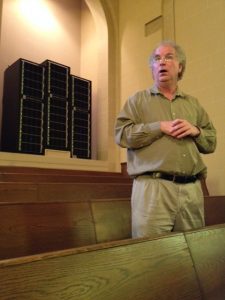
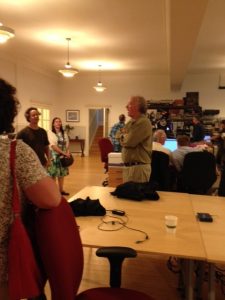
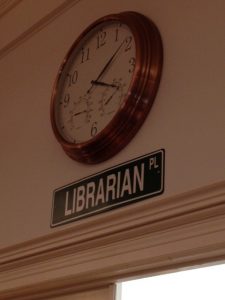
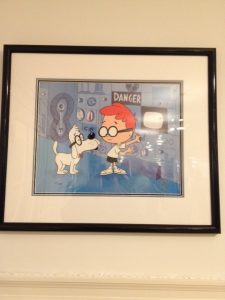
In closing, I would be remiss if I didn’t mention the wonderful dinner organized by Susan of past and present ZSR colleagues. It was great catching up with Lauren Pressley and Erik Mitchell, and Erik’s partner Jeff Loo. Also worth mentioning is the fabulous final dinner in San Francisco that Susan and I had at Burma Superstar. All in all this was a great ALA, and I hope I get another chance to visit San Francisco in the near future.

3 Comments on ‘Carolyn at ALA Annual 2015’
Thanks for detailing your discussion session on Social Justice Leadership. It is really impressive how these librarians took on a massive, important project to capture documentation on the Ferguson event and Black Lives Matter movement.
Thanks for the pictures!
Thanks for sharing!